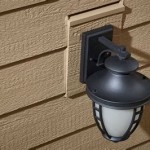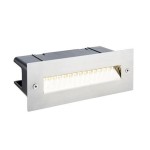```html
How To Fill A Large Outdoor Pot
Filling a large outdoor pot can seem daunting, especially considering the sheer volume of potting mix required. However, strategically filling these containers not only reduces the amount of potting mix needed but also improves drainage, aeration, and overall plant health. This article provides a comprehensive guide to effectively filling large outdoor pots, ensuring optimal conditions for thriving plants.
Choosing the Right Pot
Before delving into the filling process, selecting the appropriate pot is crucial. Consider the mature size of the plants intended for the container. The pot should be adequately sized to accommodate their root system and provide sufficient space for growth. Drainage is another vital factor. The pot must have drainage holes to prevent waterlogging, which can lead to root rot and other plant diseases. Materials such as terracotta, plastic, or resin are commonly used for outdoor pots. Terracotta is porous and allows for good aeration but dries out quickly. Plastic pots retain moisture better but may overheat in direct sunlight. Resin pots are lightweight and durable, offering a balance of both benefits. Consider the aesthetic appeal of the pot as well, ensuring it complements the home's exterior and the selected plants.
Consider the weight implications after the pot is filled. Large amounts of soil and plant material, combined with the pot's weight, can make moving the container very difficult. Choose a location where the pot can remain permanently or consider pots with wheels or casters for easier maneuverability. If placing the pot on a deck or patio, ensure the surface can support the weight to prevent damage. Protect the surface beneath the pot with pot feet or a saucer to prevent staining and promote air circulation.
Layering the Pot Strategically
The key to efficiently filling a large outdoor pot lies in layering different materials. This approach minimizes the amount of expensive potting mix needed while enhancing drainage and promoting healthy root growth. The bottom layer serves primarily as a drainage base, preventing the potting mix from becoming waterlogged. This layer can consist of various materials, depending on availability and expense.
One common method is to use lightweight materials like plastic bottles, milk jugs, or packing peanuts. These materials take up significant volume without adding excessive weight to the pot. Ensure these materials are clean and free from contaminants before use. Another option is to use broken terracotta pots or rocks. These materials provide excellent drainage and prevent the soil from compacting at the bottom of the pot. However, they are heavier than plastic alternatives and may make the pot more difficult to move. Wood chips or shredded bark can also be used but will decompose over time, requiring occasional replenishment. Avoid using materials that decompose rapidly or retain excessive moisture, as these can create anaerobic conditions and harm plant roots.
Cover the drainage layer with a permeable barrier, such as landscape fabric or burlap. This barrier prevents the potting mix from filtering down into the drainage layer and compromising its effectiveness. The barrier also facilitates drainage by allowing excess water to pass through while retaining the soil. Secure the landscape fabric or burlap in place to prevent it from shifting during the filling process. This barrier is essential for maintaining the integrity of the layered system and ensuring long-term soil health.
Selecting and Adding the Right Potting Mix
The choice of potting mix is critical for the success of any container garden. Unlike garden soil, potting mix is specifically formulated for container growing, providing excellent drainage, aeration, and nutrient retention. Avoid using garden soil directly in pots, as it tends to compact and become waterlogged, hindering root growth and increasing the risk of disease. Instead, opt for a high-quality potting mix or create a custom blend tailored to the specific needs of the planned plants.
A standard potting mix typically consists of a blend of peat moss, perlite, and vermiculite. Peat moss retains moisture and provides a source of organic matter. Perlite improves drainage and aeration, preventing soil compaction. Vermiculite also enhances drainage and aeration while retaining moisture and nutrients. Amend the potting mix with compost to provide additional nutrients and improve soil structure. Other amendments, such as slow-release fertilizers or mycorrhizae, can also be added to promote healthy plant growth. For plants that prefer acidic soil, such as azaleas or rhododendrons, amend the potting mix with sphagnum peat moss or sulfur.
When adding the potting mix, fill the pot gradually, leaving space for the plants' root balls. Gently firm the soil around the plants, avoiding over-compaction. Water thoroughly after planting to settle the soil and eliminate air pockets. Add more potting mix as needed to maintain the desired soil level. After planting, mulch the surface of the soil with organic materials such as wood chips or shredded bark to retain moisture, suppress weeds, and regulate soil temperature. Choose a mulch that complements the aesthetic of the pot and the surrounding landscape.
Maintaining Adequate Drainage
Ensuring adequate drainage is essential for the long-term health of plants in large outdoor pots. While the bottom drainage layer and the right potting mix play crucial roles, additional measures can be taken to further improve drainage and prevent waterlogging. Regularly check the drainage holes to ensure they are not blocked by debris or soil. Clear any obstructions as needed to allow excess water to drain freely.
Consider elevating the pot slightly off the ground using pot feet or a saucer. This allows for better air circulation around the base of the pot and prevents the drainage holes from being blocked by the underlying surface. Pot feet also help to protect the underlying surface from staining and damage caused by moisture. Monitor the soil moisture levels regularly, especially during periods of heavy rainfall. Avoid overwatering, as this can lead to root rot and other water-related problems.
If the pot is placed on a non-porous surface, such as concrete or asphalt, consider adding a layer of gravel or pebbles beneath the drainage holes to improve drainage. This layer creates a space for excess water to drain away from the pot, preventing it from pooling and causing waterlogging. Periodically flush the pot with fresh water to remove accumulated salts and minerals that can inhibit drainage. By implementing these drainage strategies, the plants in large outdoor pots can thrive in a well-drained and healthy environment.
```
What Are The 5 Best Pot Fillers To Use In Large Planters

How To Fill A Big Flower Pot In 6 Steps Garden Patch

The Best Tip For Filling Large Outdoor Planters Backyard Landscaping Container Gardening

Top Tricks To Fill Large Planters 18 Ideas Eplanters

Ng Pearls For Large Planters Better Homes Gardens March 2024 Potted Plants Outdoor Container Gardening

Tricks To Fill A Large Planter Nourish And Nestle

The Best Ways To Fill Space In Tall Plant Pots That Are Too Deep Green Permaculture

How To Fill Large Planters From Potting Soil Drainage Holes Jay Scotts Collection

How To Plant Flowers In Large Planters

How To Fill An Outdoor Planter Domestically Blissful







